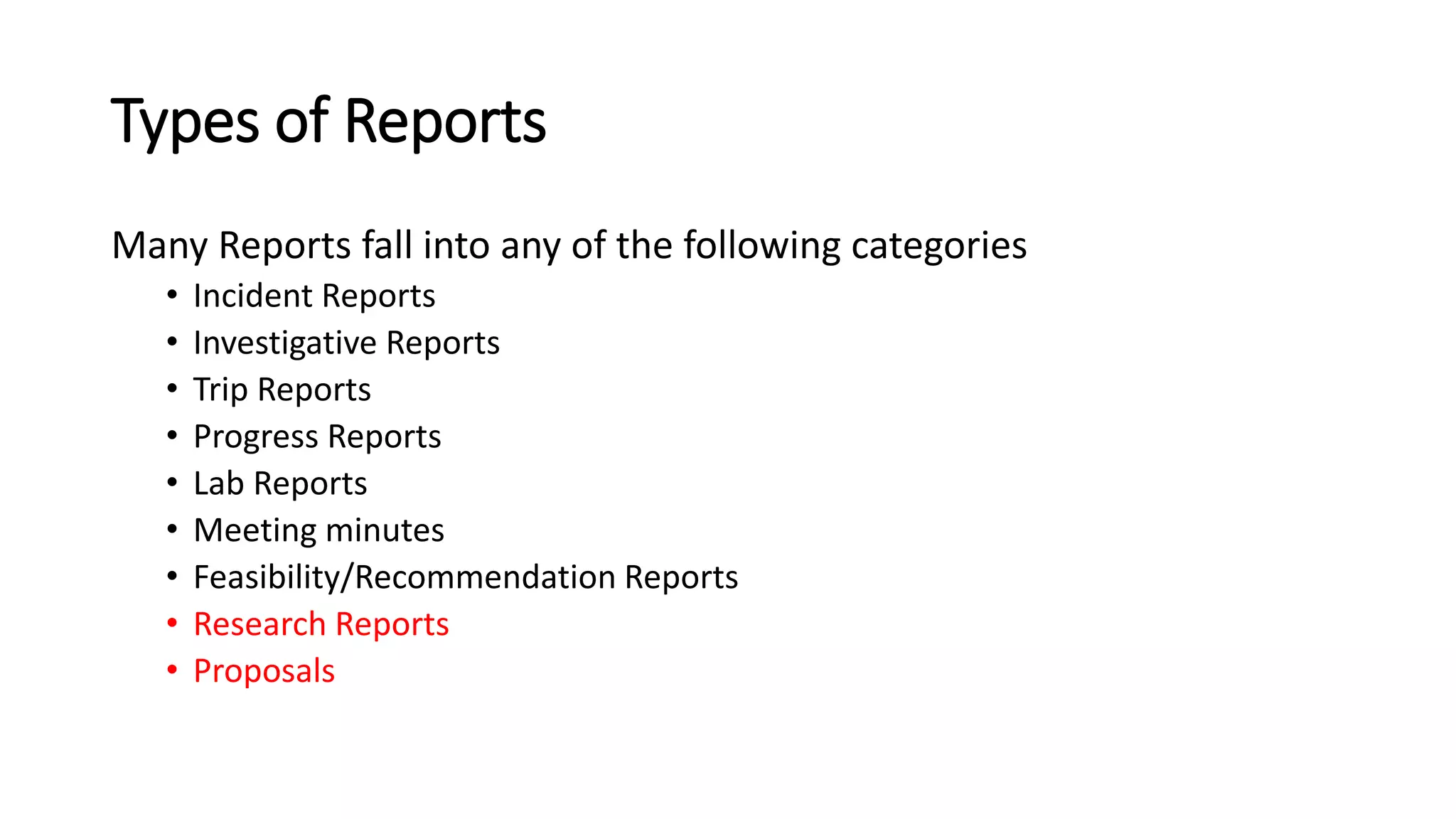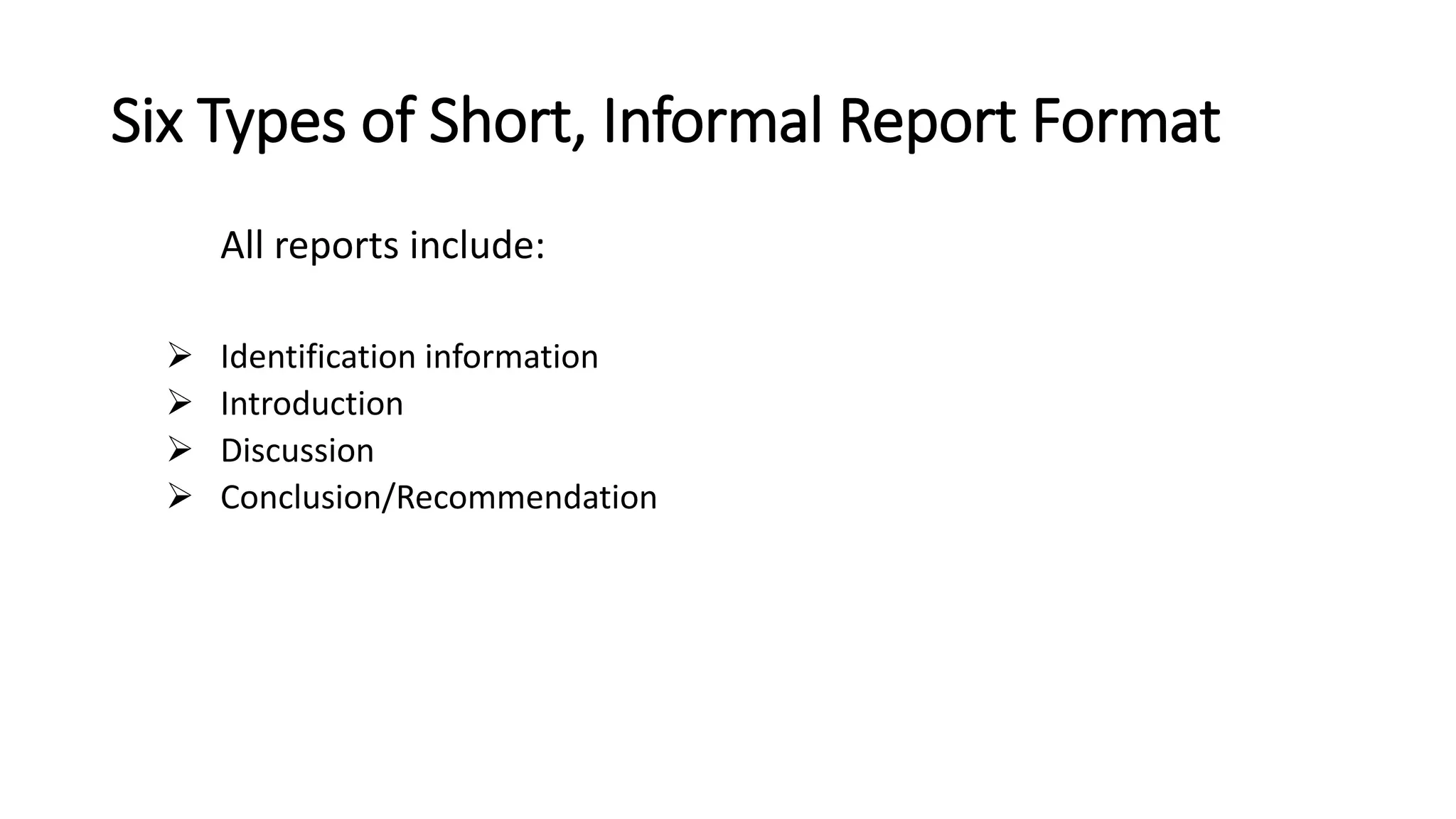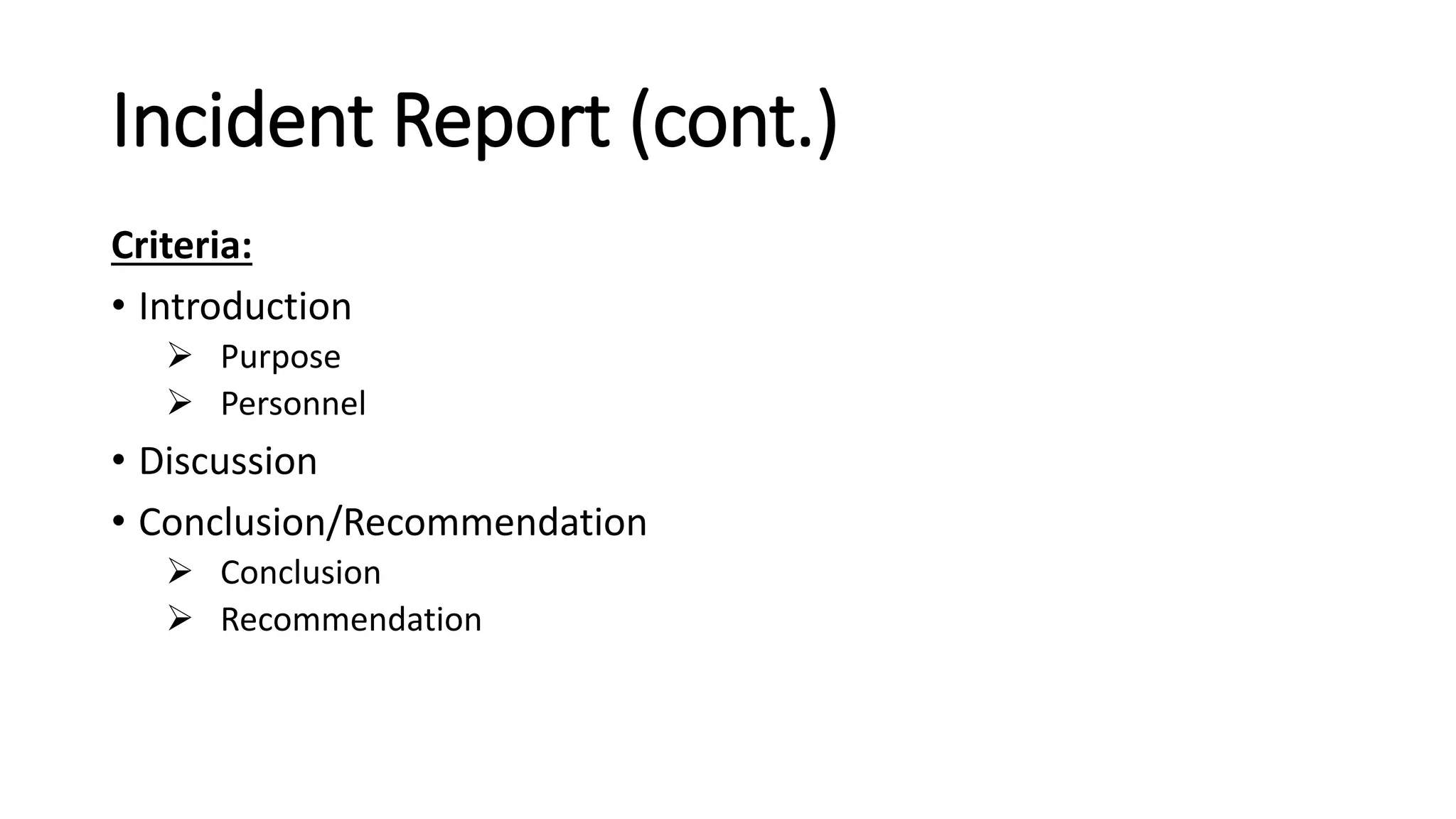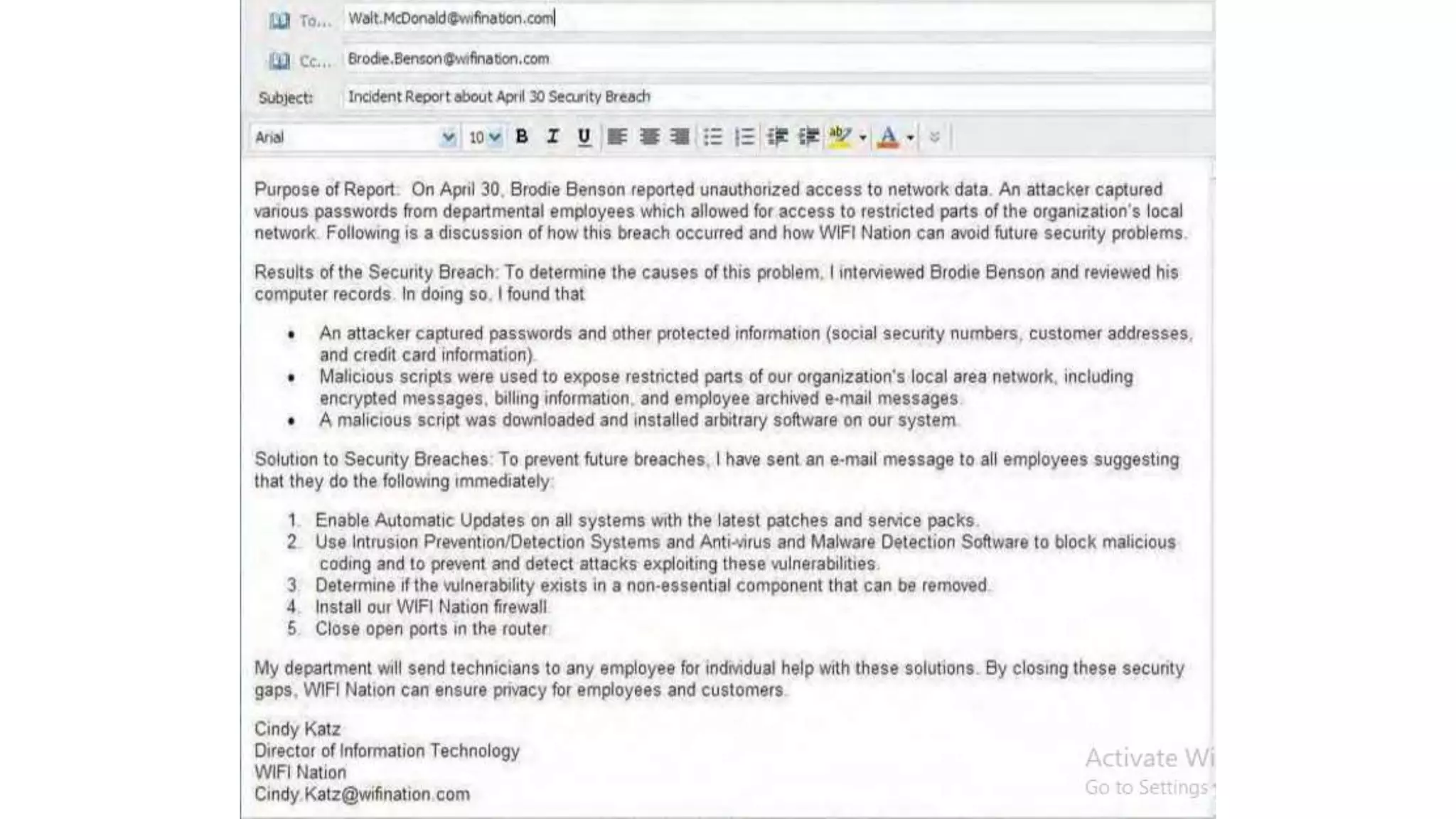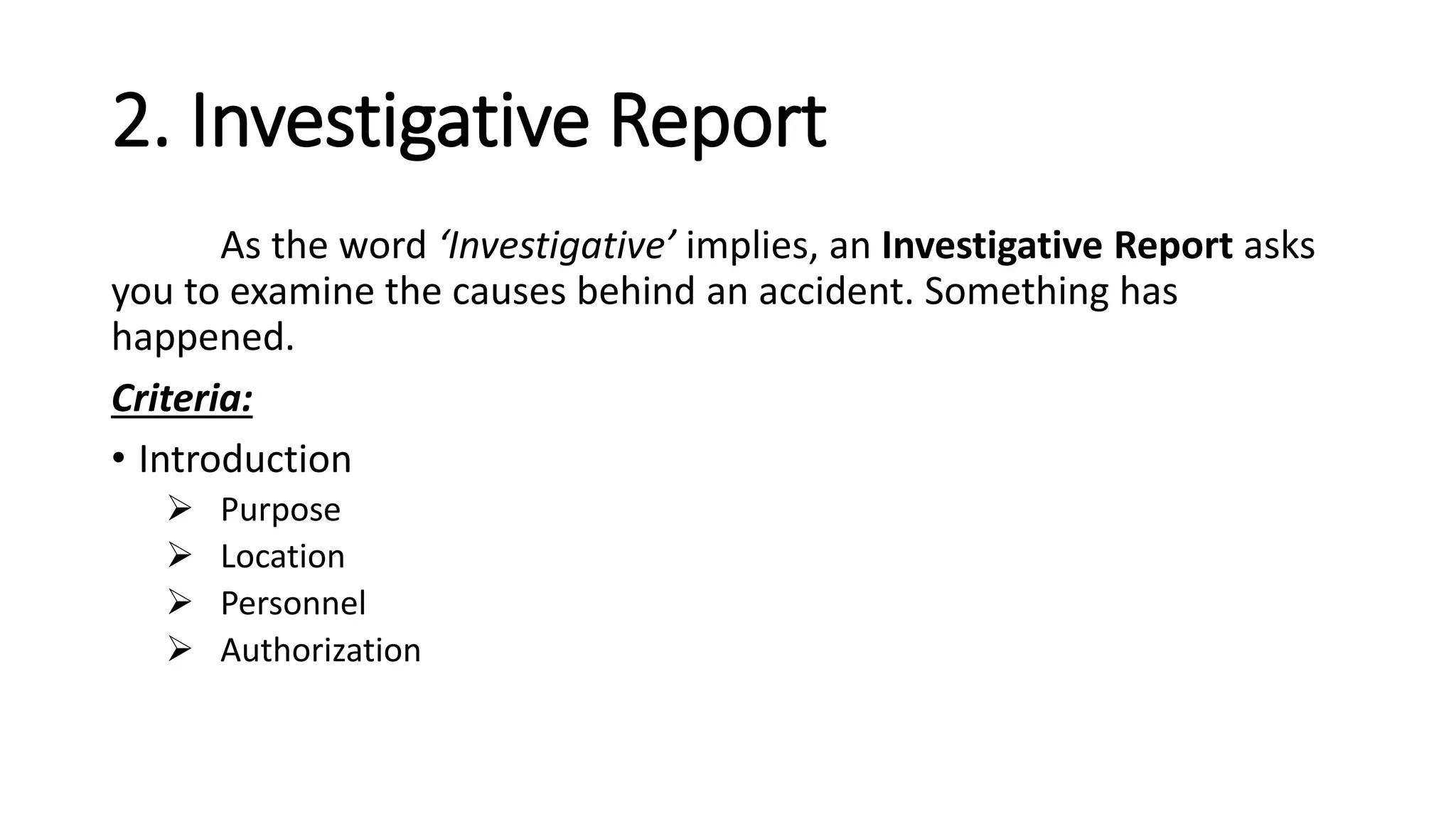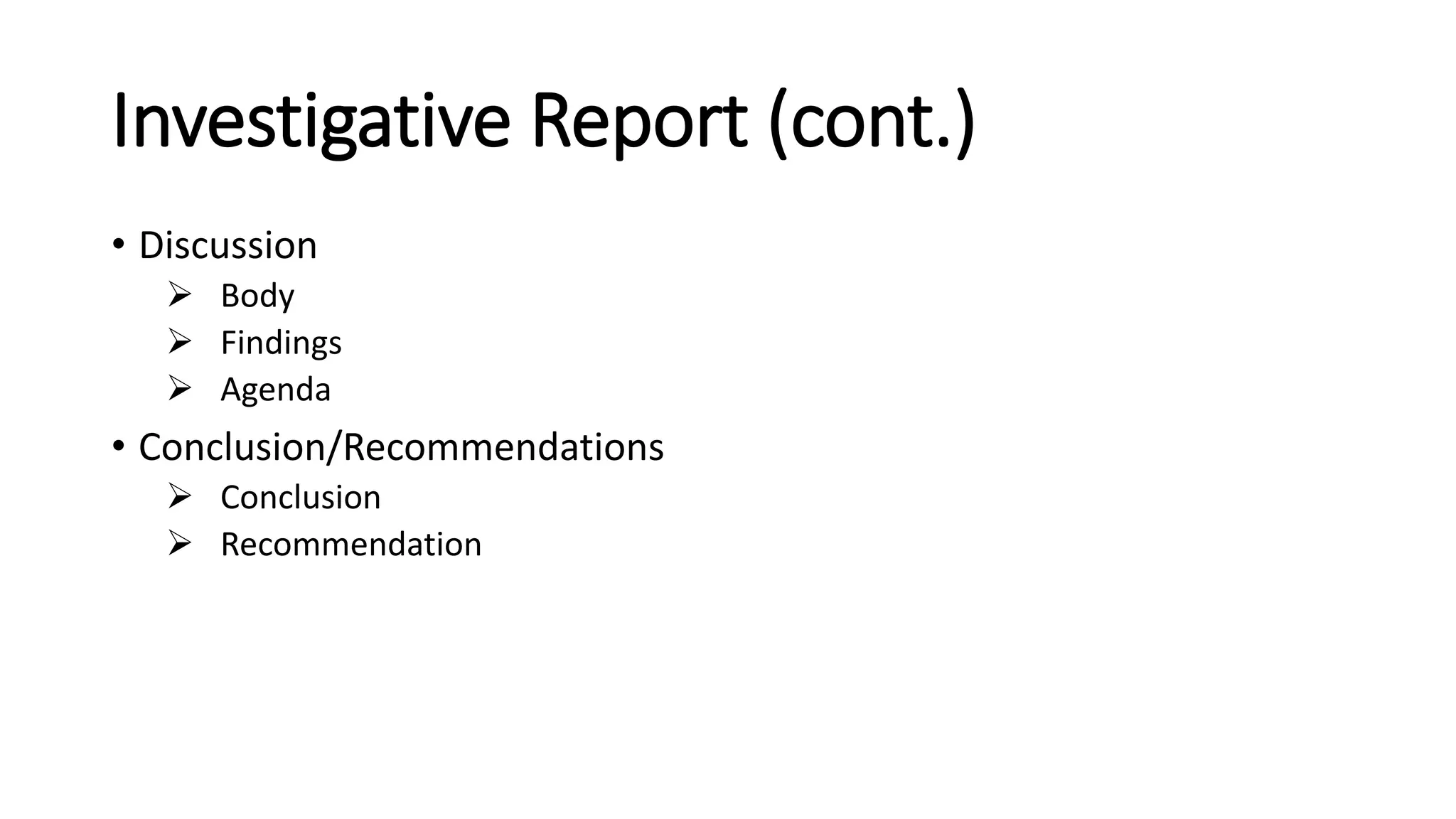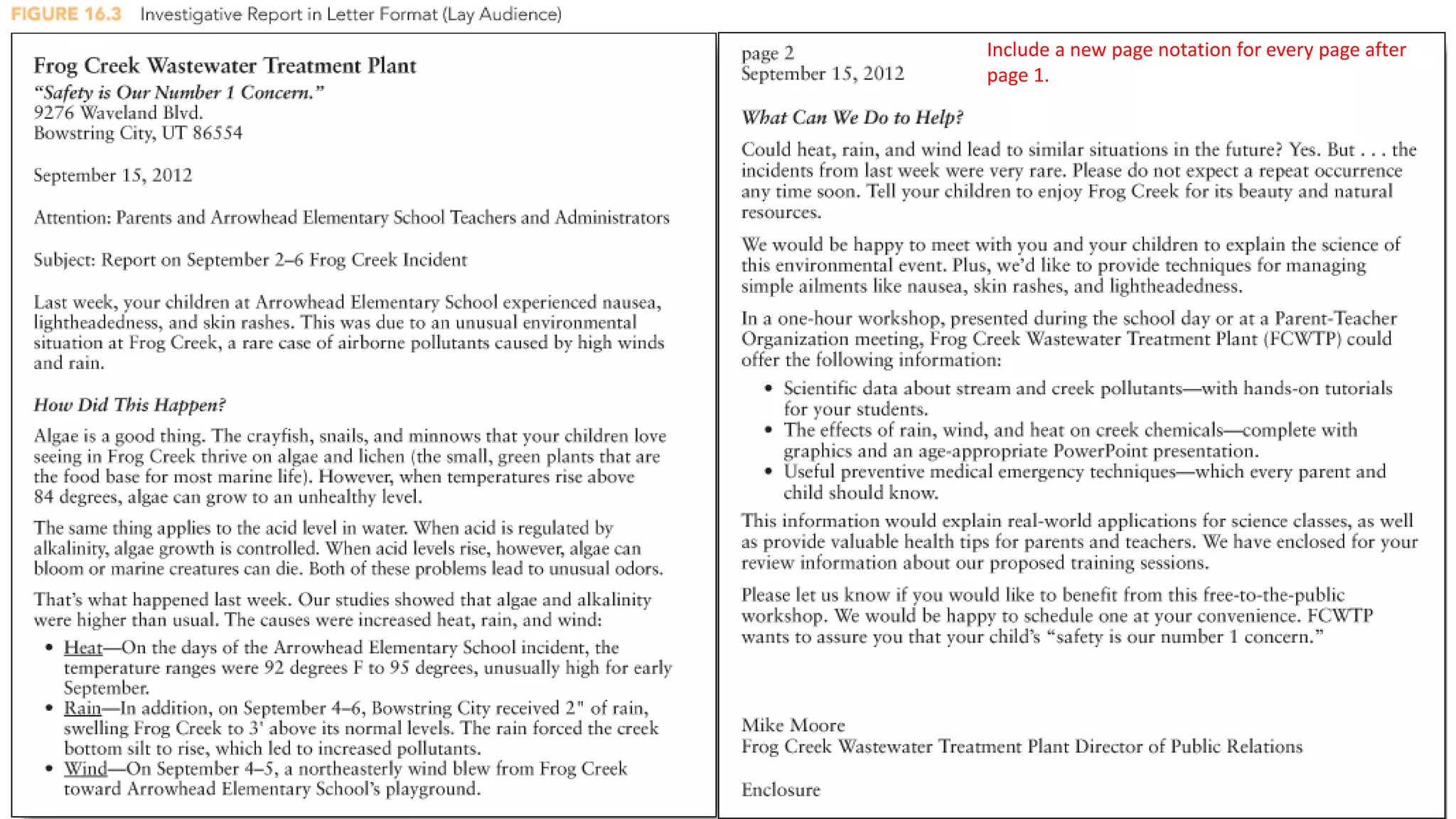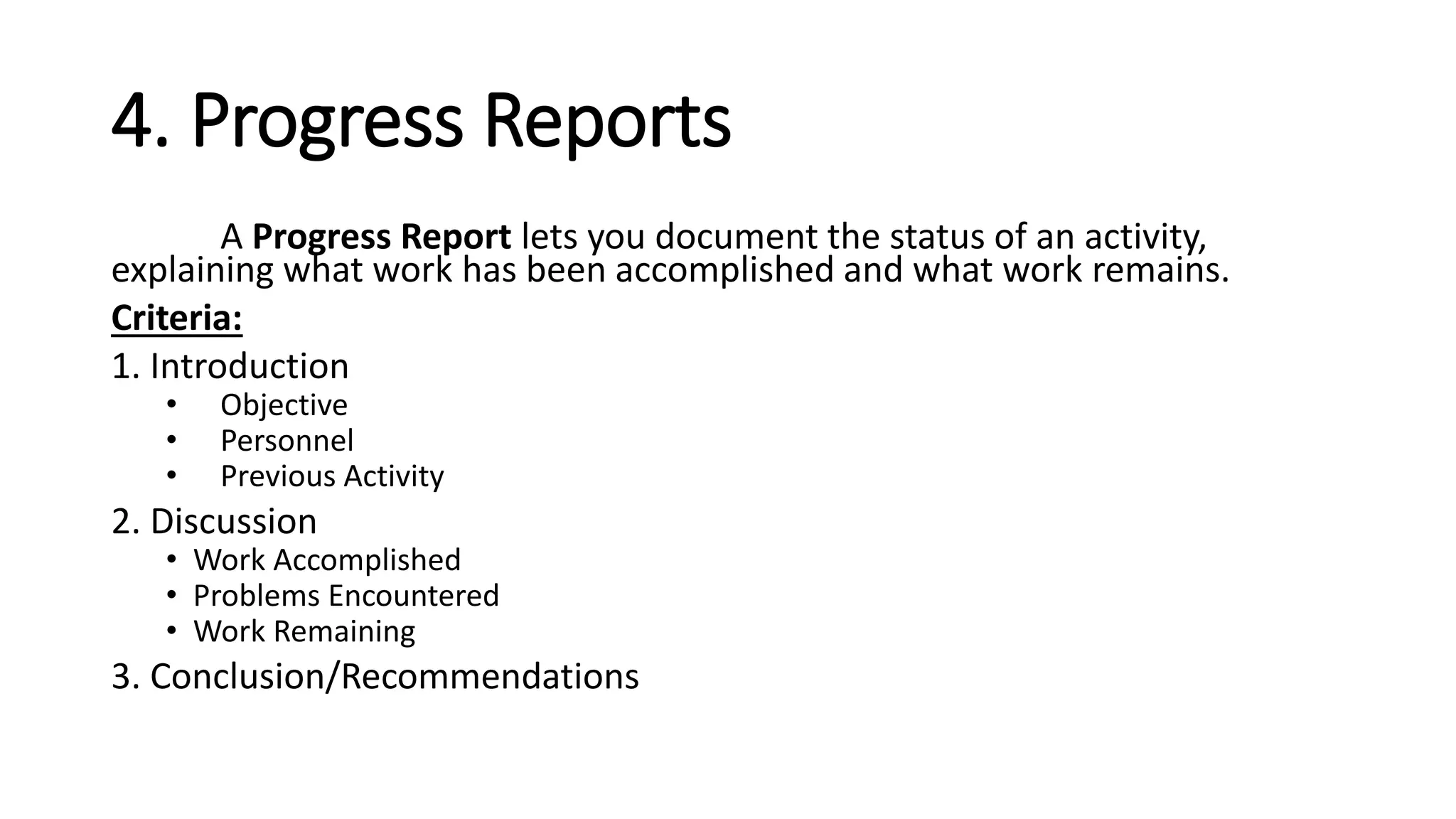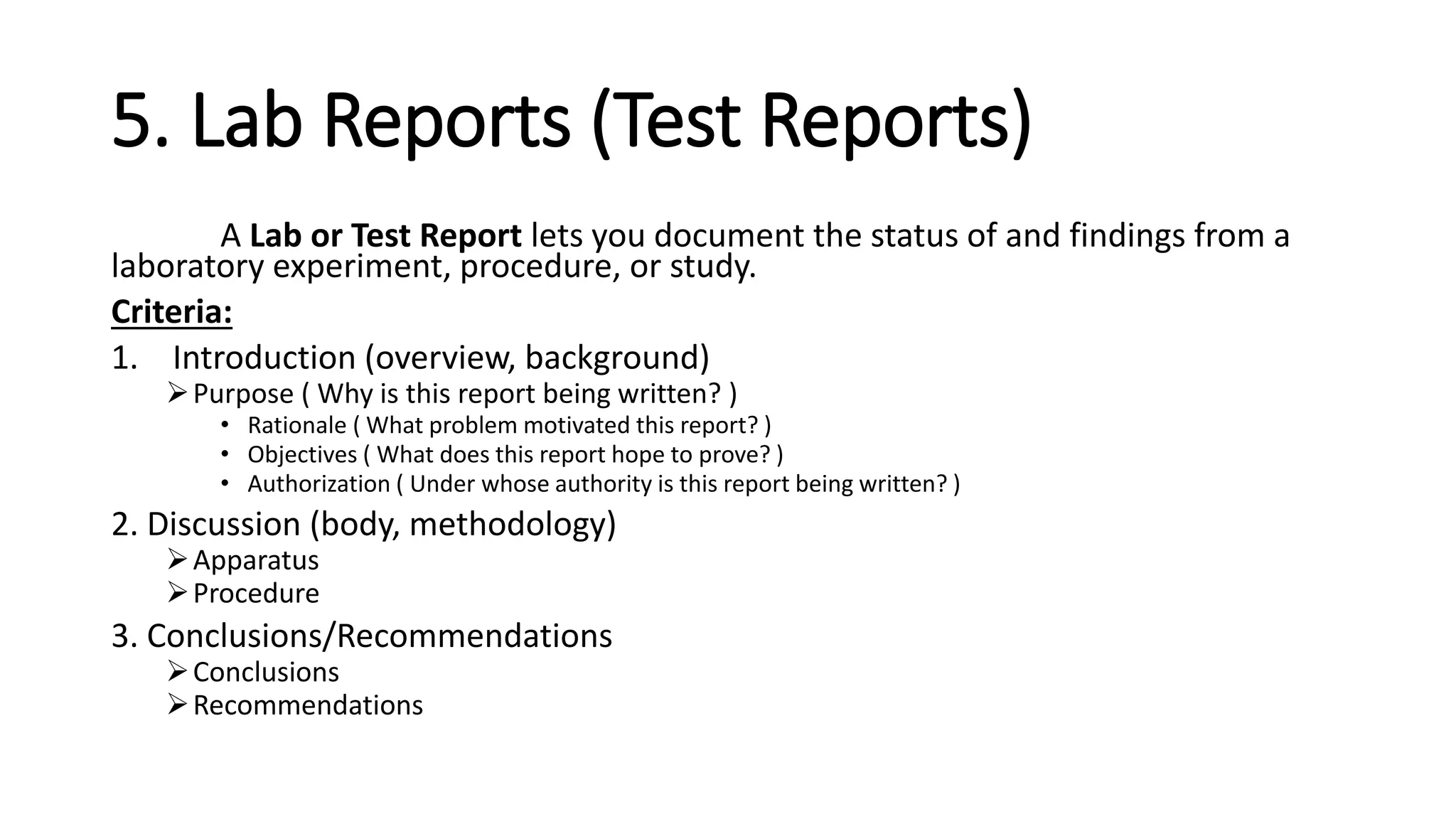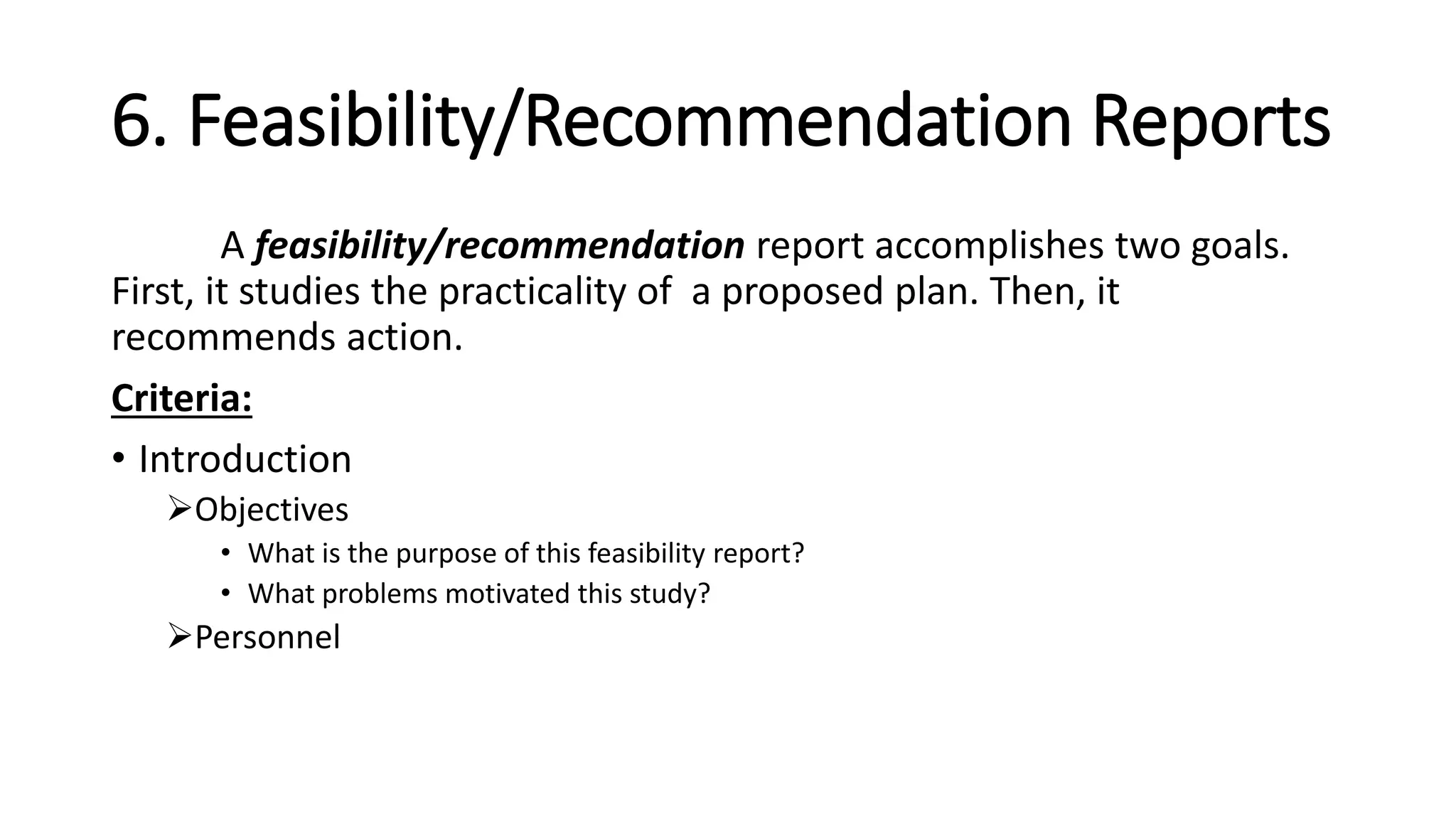This document discusses different types of short, informal reports. It begins by defining a report and explaining their purposes. Reports can vary in length, formality, audience, and communication channels. The document then describes six common types of short reports: incident reports, investigative reports, trip reports, progress reports, lab/test reports, and feasibility/recommendation reports. For each type, it provides the typical structure and criteria, including introduction, discussion, and conclusion sections. Finally, it outlines best practices for organizing, developing ideas, considering the audience, and employing an appropriate writing style in short reports.









